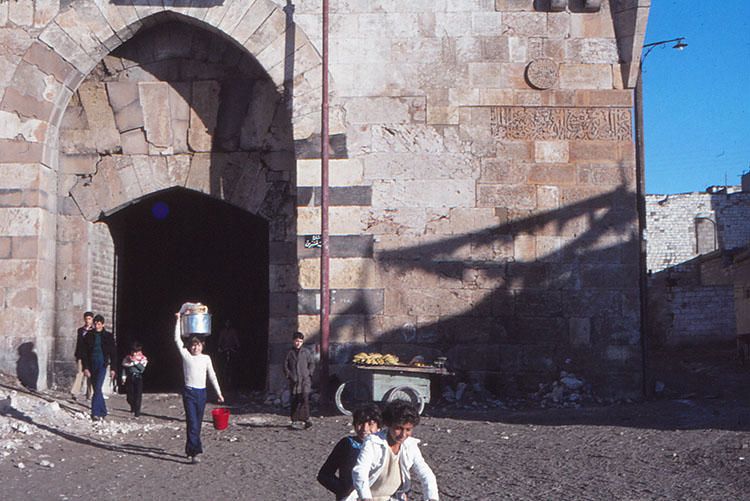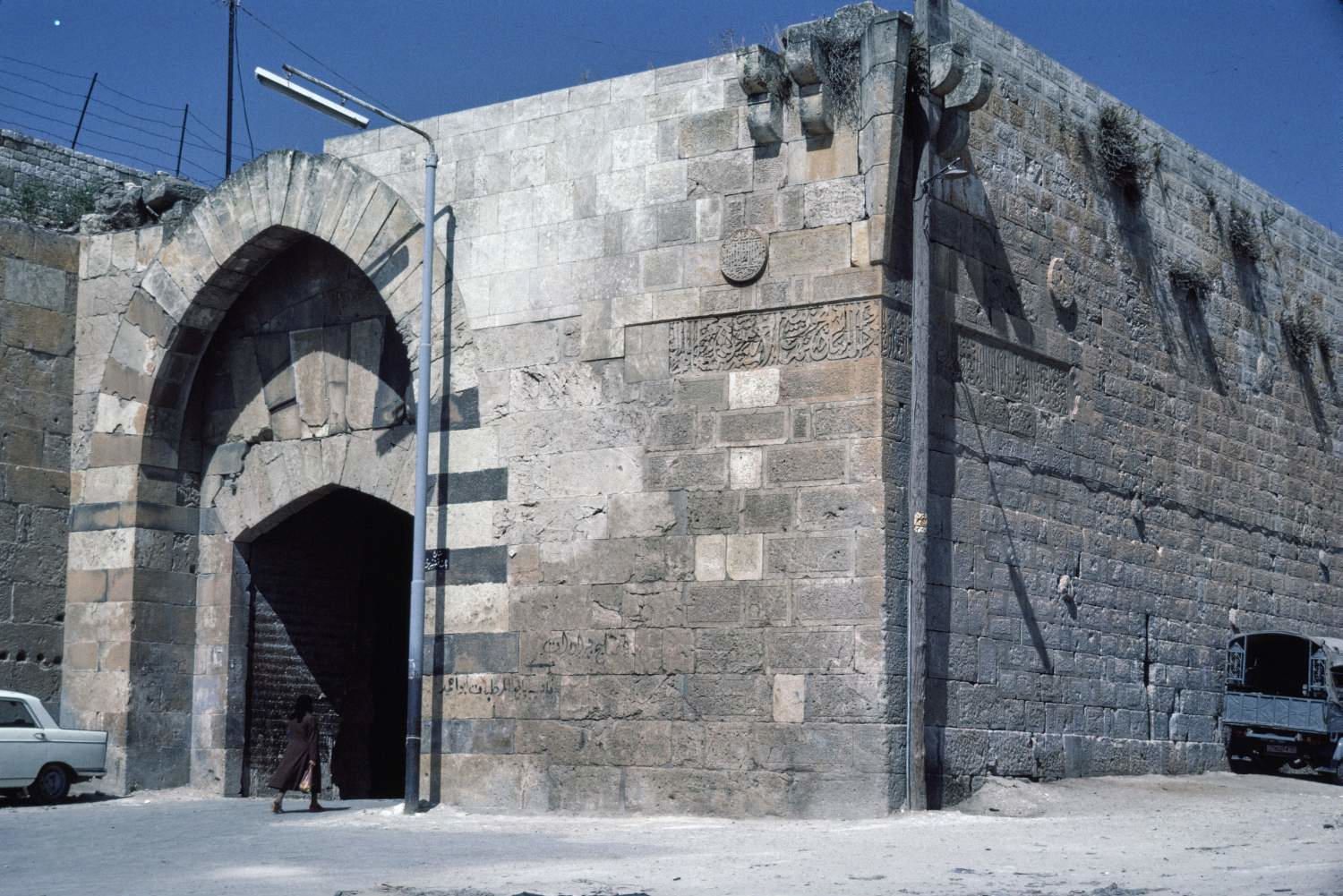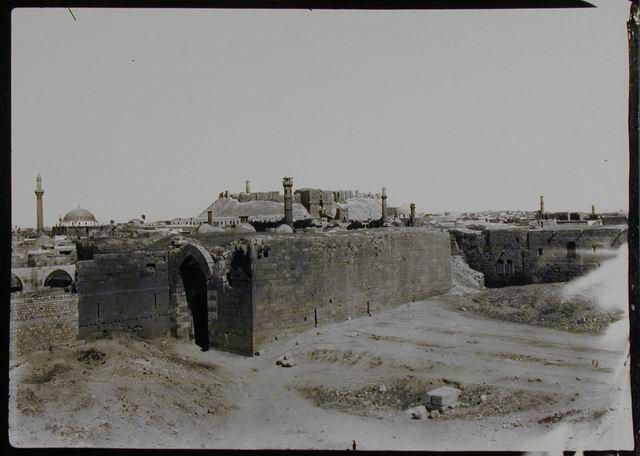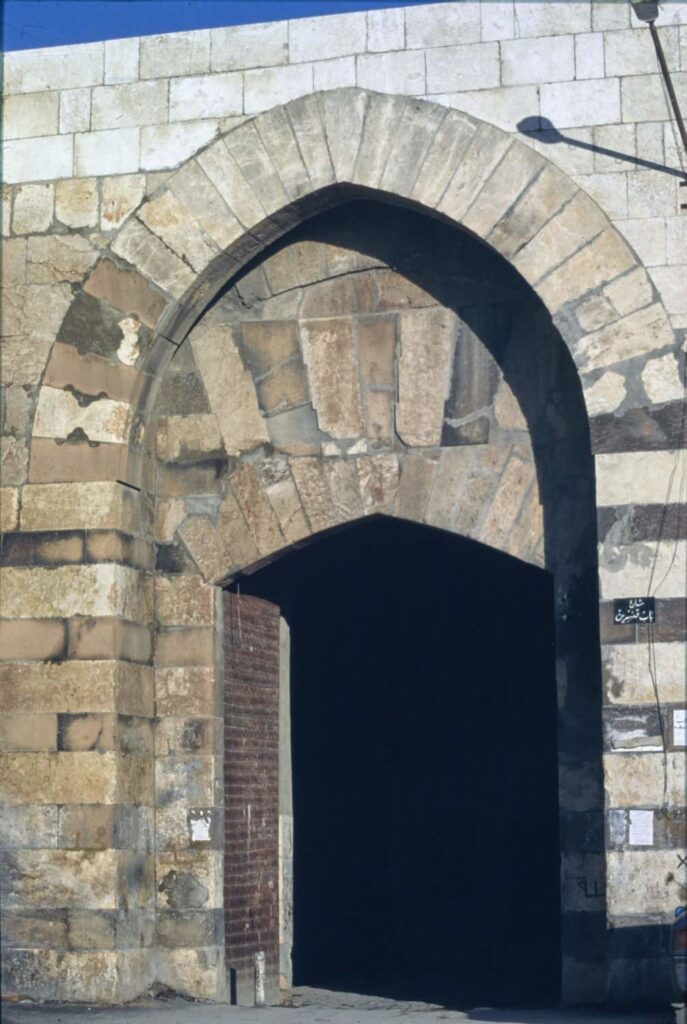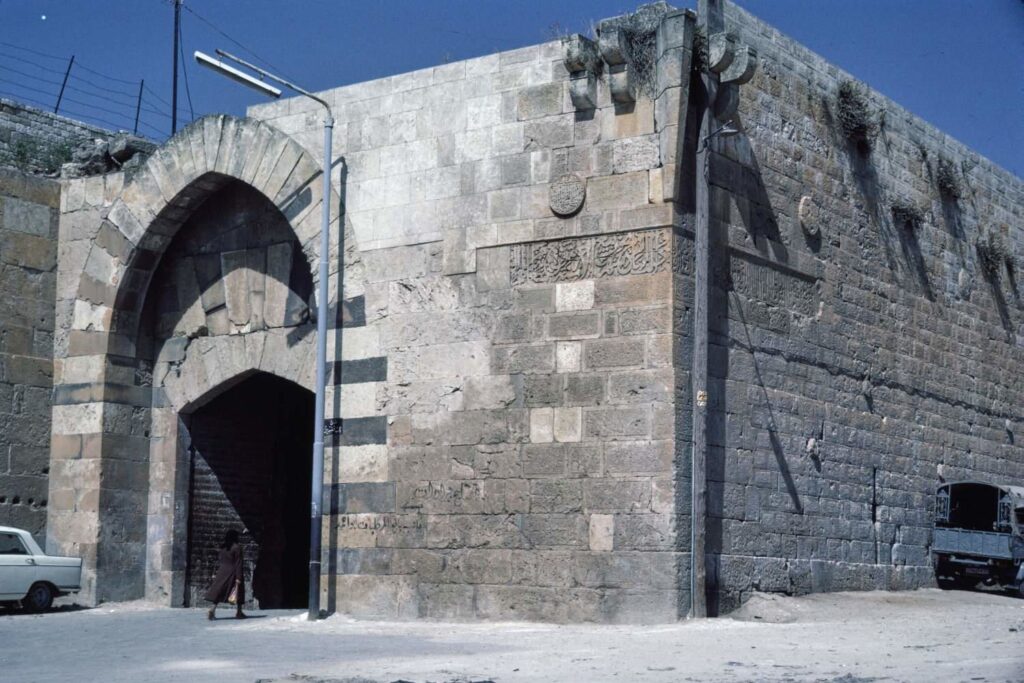Bab Qinnasrin Bab Qinnasrin (Qinnasrin Gate) was originally built by the Hamdanid ruler of Aleppo, Sayf al-Dawla al-Hamdani. However, it was completely rebuilt in 1256 by al-Nasir Yusuf II, who also renovated the southwestern section of the city wall between Bab Qinnasrin and Bab Antakiya (Antioch Gate). The architecture of Bab Qinnasrin consists of two massive towers of unequal height. The western tower, standing at eighteen meters, was used for defense, while the eastern tower, at twenty-six meters, formed the entrance. The imposing Ayyubid gate itself features a long arched passage leading to a three-chambered hall with a central cross-vaulted chamber. This chamber opens into another cross-vaulted chamber connected to the western side of the gate by a passage extending to the wall behind the western tower. After passing through two more chambers, one finally enters the city. The gate incorporates ablaq masonry with alternating light and dark stone courses and features an inscription of King al-Nasir Yusuf. It was secured by wooden doors reinforced with wrought iron. During its construction, the gate was designed to be as strong as a fortress, rivaling even the Citadel’s gate in its solidity. The gate underwent restoration in 2017. This involved dismantling and reassembling leaning stones and installing a symbolic gate leaf for visitors. QR code panels were also added, explaining the history of the ancient city of Qinnasrin and its role in the Silk Road.
